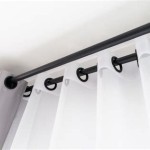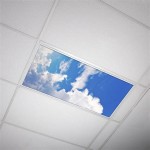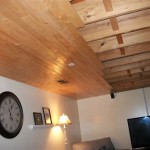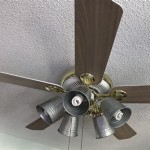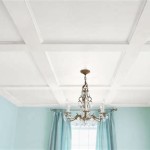```html
The Benefits of a Belt-Driven Ceiling Fan with Light
Ceiling fans are a common fixture in homes and commercial spaces, providing both aesthetic appeal and functional advantages. While direct-drive ceiling fans are widely recognized, belt-driven ceiling fans with lights offer a unique set of benefits that warrant consideration. This article explores the advantages of these innovative appliances, focusing on their operational characteristics, maintenance requirements, and overall performance.
A belt-driven ceiling fan with light distinguishes itself from its direct-drive counterpart through its motor's location and transmission of power. In a direct-drive system, the motor is typically housed directly above the fan blades, connected to them via a central shaft. Conversely, in a belt-driven system, the motor is often positioned remotely, usually within the ceiling or even in an adjacent room. The motor's rotational force is then transferred to the fan blades via a belt-and-pulley system. This design choice offers several potential advantages, impacting noise levels, aesthetic flexibility, and maintenance accessibility.
Reduced Noise Levels
One of the primary benefits of a belt-driven ceiling fan with light is its potential for significantly reduced noise levels compared to direct-drive models. The separation of the motor from the fan housing plays a crucial role in this reduction. The mechanical vibrations and humming sounds inherent in electric motors are less likely to be transmitted directly into the room when the motor is located remotely. This is especially beneficial in bedrooms, libraries, or home offices where a quiet environment is desirable.
Direct-drive fans, particularly those with older or less efficient motors, can sometimes produce a noticeable hum or buzz, especially at higher speeds. This noise can be distracting and even disruptive, interfering with sleep or concentration. By isolating the motor and using a belt to transfer power, belt-driven fans effectively dampen these vibrations and minimize the audible noise produced during operation.
The quality of the belt itself also contributes to the quiet operation of a belt-driven ceiling fan. Modern belts are typically made from durable, flexible materials designed to minimize friction and noise. Regular inspection and replacement of the belt, as needed, can further ensure consistent and quiet performance over the lifespan of the fan.
Enhanced Aesthetic Flexibility
The design of a belt-driven ceiling fan with light provides greater aesthetic flexibility compared to traditional direct-drive models. Because the motor is not directly integrated into the fan housing, designers have more freedom to create visually appealing and unique fan styles. This separation allows for slimmer, more streamlined fan designs, or the incorporation of more intricate decorative elements.
The remote motor location also facilitates the use of different materials and finishes for the fan blades and housing. Direct-drive fans often need to accommodate the motor's size and weight, limiting the design options. With a belt-driven system, designers can utilize lighter and more decorative materials, resulting in a wider range of aesthetic choices.
Furthermore, the lighting component can be more seamlessly integrated into the fan design. Without the constraints of a large motor housing, the light fixture can be more compact, elegant, or strategically positioned to provide optimal illumination. This flexibility allows homeowners to choose a belt-driven ceiling fan with light that complements their existing décor and architectural style.
Improved Maintenance Accessibility
While belt-driven ceiling fans may initially seem more complex due to their belt and pulley system, they can offer improved maintenance accessibility in certain situations. The remote location of the motor can make it easier to access and service, particularly if the motor is located in an easily accessible attic or service area.
Direct-drive fans often require the entire fan unit to be disassembled to access the motor for repairs or maintenance. This can be a cumbersome and time-consuming process, especially for larger or more elaborate fan models. With a belt-driven system, accessing the motor for routine maintenance, such as lubrication or brush replacement, can be simpler and less disruptive.
However, it is important to acknowledge that the belt itself requires periodic inspection and replacement. Over time, belts can stretch, crack, or wear down, affecting the fan's performance. Fortunately, belt replacement is typically a straightforward process that can be performed by a homeowner with basic mechanical skills. The ease of belt replacement often outweighs the inconvenience of accessing the motor in a direct-drive system.
In addition to the abovementioned benefits, some belt-driven ceiling fans incorporate advanced features such as variable speed control, remote operation, and energy-efficient lighting options. These added features further enhance the user experience and contribute to the overall value of the appliance.
Proper installation is crucial for the optimal performance and longevity of a belt-driven ceiling fan with light. It is recommended to consult with a qualified electrician or contractor to ensure that the fan is installed correctly and safely, particularly if electrical wiring or structural modifications are required. A professional installation will minimize the risk of malfunctions and ensure that the fan operates smoothly and efficiently.
The choice between a belt-driven and a direct-drive ceiling fan ultimately depends on individual needs and preferences. Belt-driven fans offer distinct advantages in terms of noise reduction, aesthetic flexibility, and potentially improved maintenance accessibility. However, they may also require periodic belt replacement. Homeowners should carefully weigh these factors before making a decision, considering their specific requirements and the overall context of their home environment.
Ongoing maintenance is essential for preserving the performance and lifespan of any ceiling fan, including belt-driven models. Regular cleaning of the blades and fan housing is recommended to prevent dust accumulation and maintain optimal airflow. Periodic inspection of the belt and pulley system is also crucial to identify any signs of wear or damage. Addressing these issues promptly can prevent more serious problems and ensure that the fan continues to operate efficiently and quietly.
```
Fanimation Bourbon Street Belt Drive Ceiling Fan Installation Feat Tom Frampton

A Belt Driven Ceiling Fans Will Create Light Pleasant Breeze Mystic Dining

Classic Belt Drive Ceiling Fans By Barn Light Electric Inspiration

A Belt Driven Ceiling Fans Will Create Light Pleasant Breeze Mystic Dining

Ceiling Fan Wikipedia

Belt Driven Ceiling Fan To Complete A Guest Bedroom Inspiration Barn Light Electric

Are Ceiling Fans With Lights Worth Benefits And Best Options Times Of

Belt Driven Ceiling Fans For Your Industrial Farmhouse

Traditional Ceiling Fans For Your Warehouse Or Business

Belt Driven Ceiling Fans And Pulley Fan Designs Woolen Mill Company Vintage Lighting Antique Looking Replica Restaurants
Related Posts


